Why you can trust Tom's Hardware
Firmware
To give you a sense of the Firmware, we’ve gathered screenshots showing most BIOS screens.
The BIOS on these Supermicro boards do the job and have improved since they first came out. However, they still aren’t as refined as the others. It still feels like a server BIOS, in that the look is relatively simple. In EZ Mode, you’re able to get an idea of where the system stands and change a couple of options. Using the Advanced mode, you’ll see headers across the top (Main, Overclocking, Advanced, H/W Monitor, Boot, Save & Exit and BIOS Update) with options listed below.
Although the BIOS works just fine, POST takes a lot longer than most consumer-facing motherboards. The way your selection is highlighted works differently, so it takes a bit of getting used to. In essence, you have two things highlighted at once and have to hit enter to select the field to get it to move. Typically, the highlight follows the cursor without making a selection.


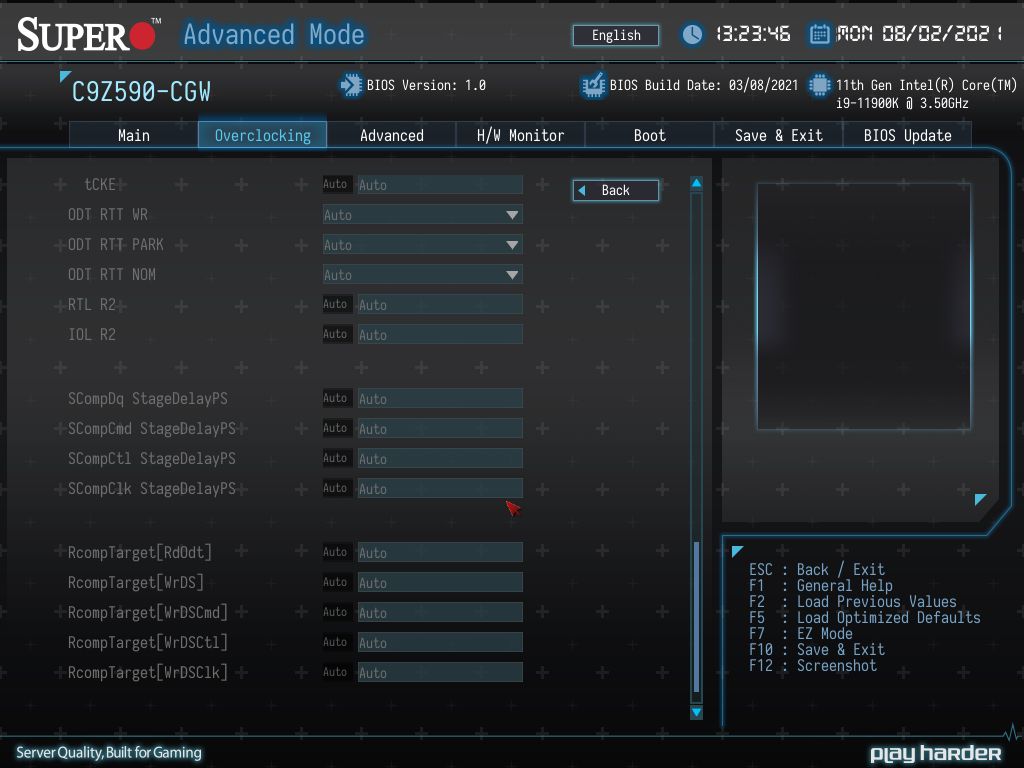

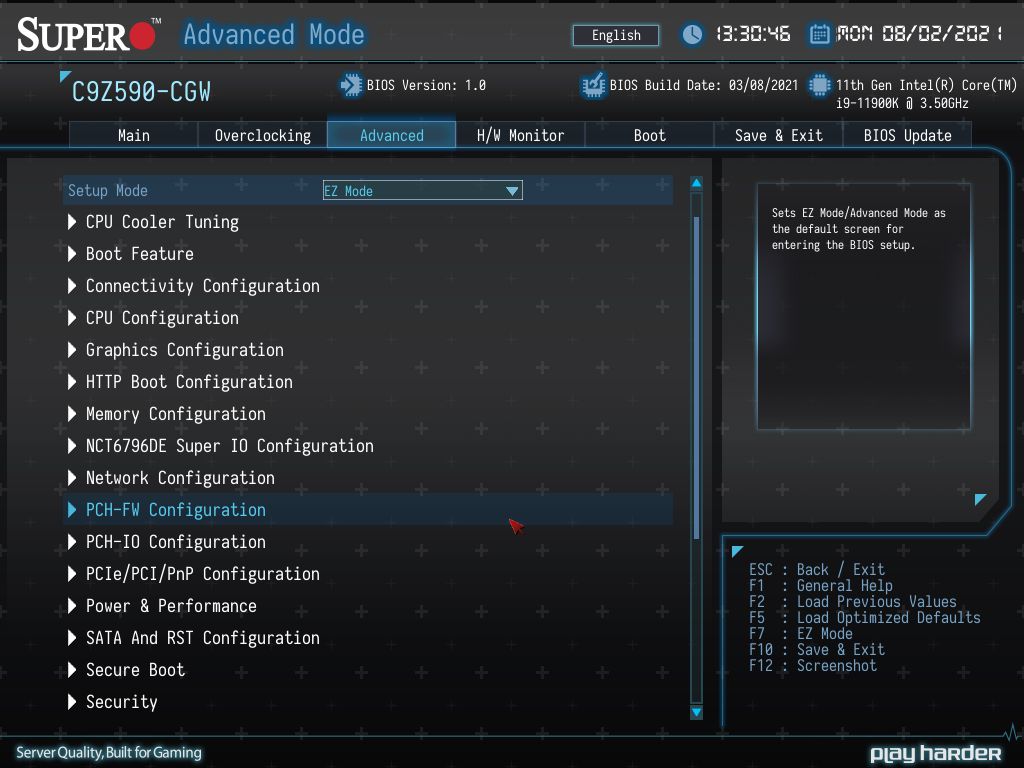






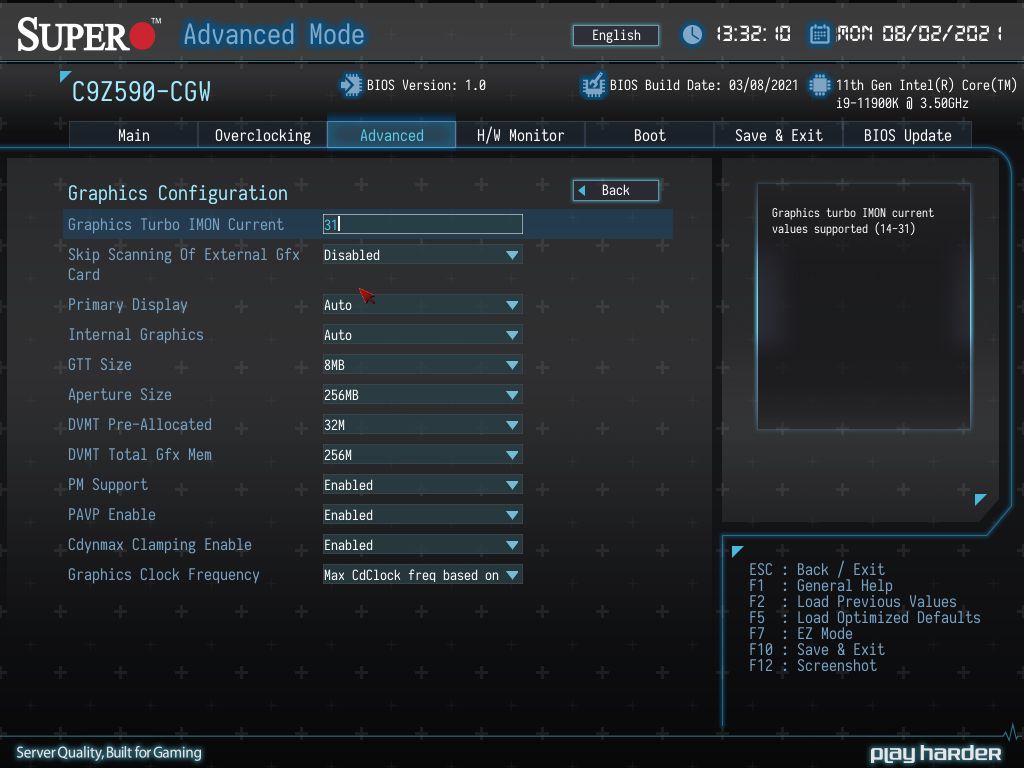











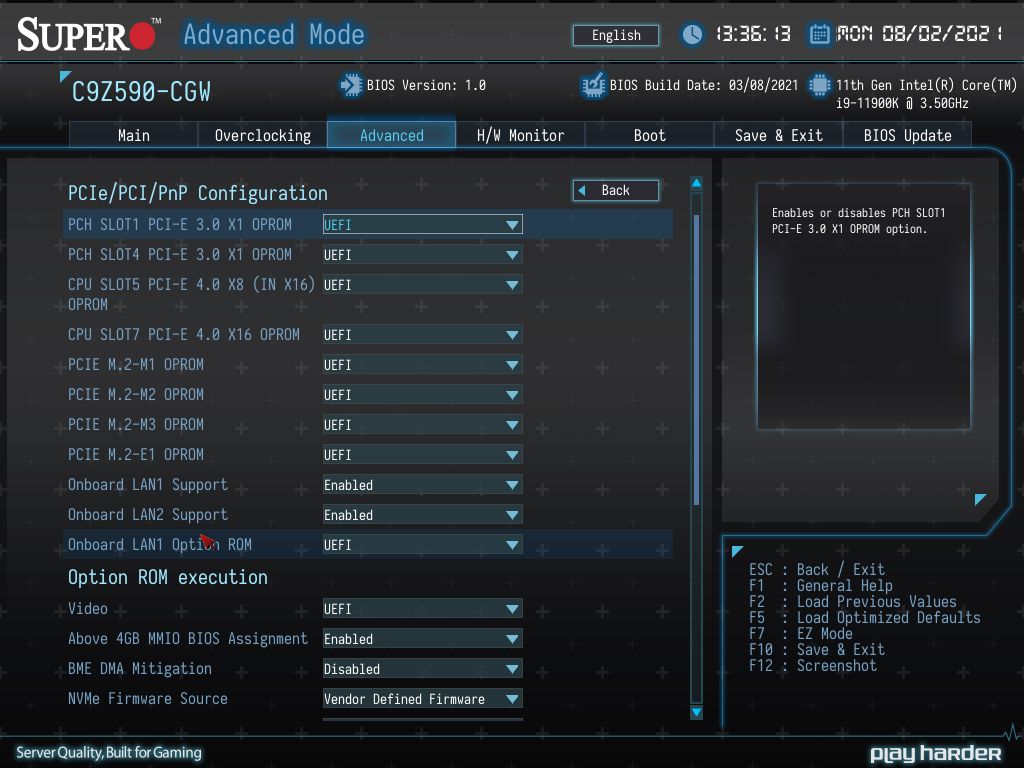




Software
Supermicro has the SuperOBooster application on the software front, an all-in-one monitoring and adjustment tool designed for its motherboards. The software is easy to read and maneuver around and controls the CPU and memory, fans, voltage, and updating the BIOS. SuperOBooster does a good job of presenting system information as well as being simple to use.



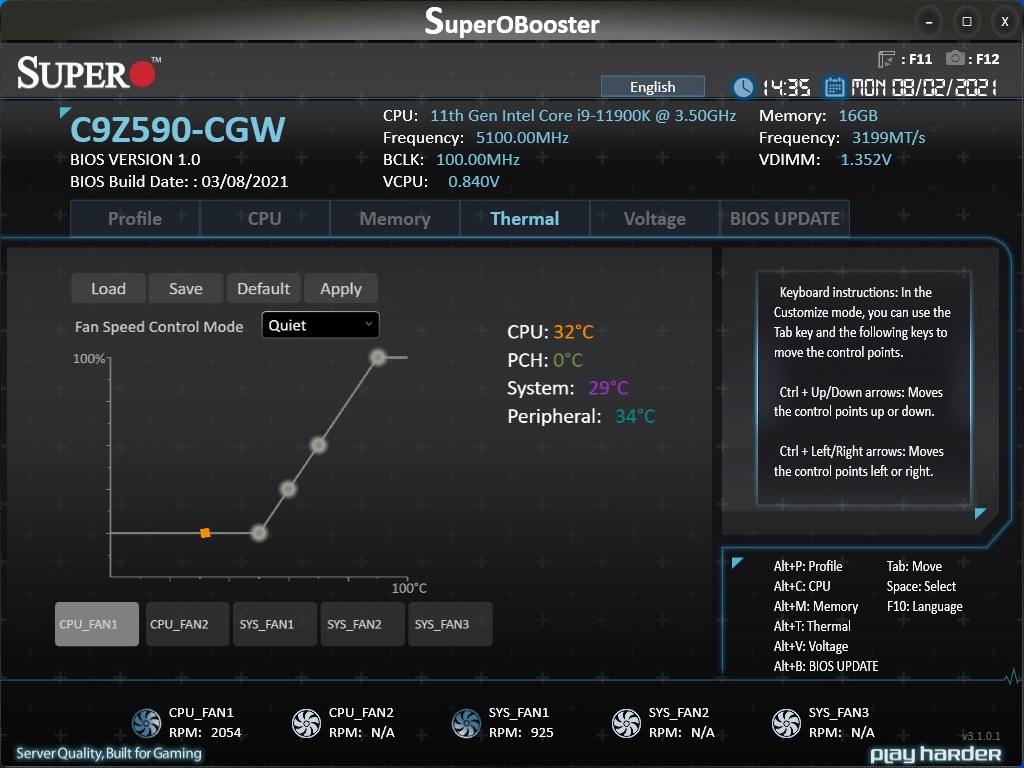
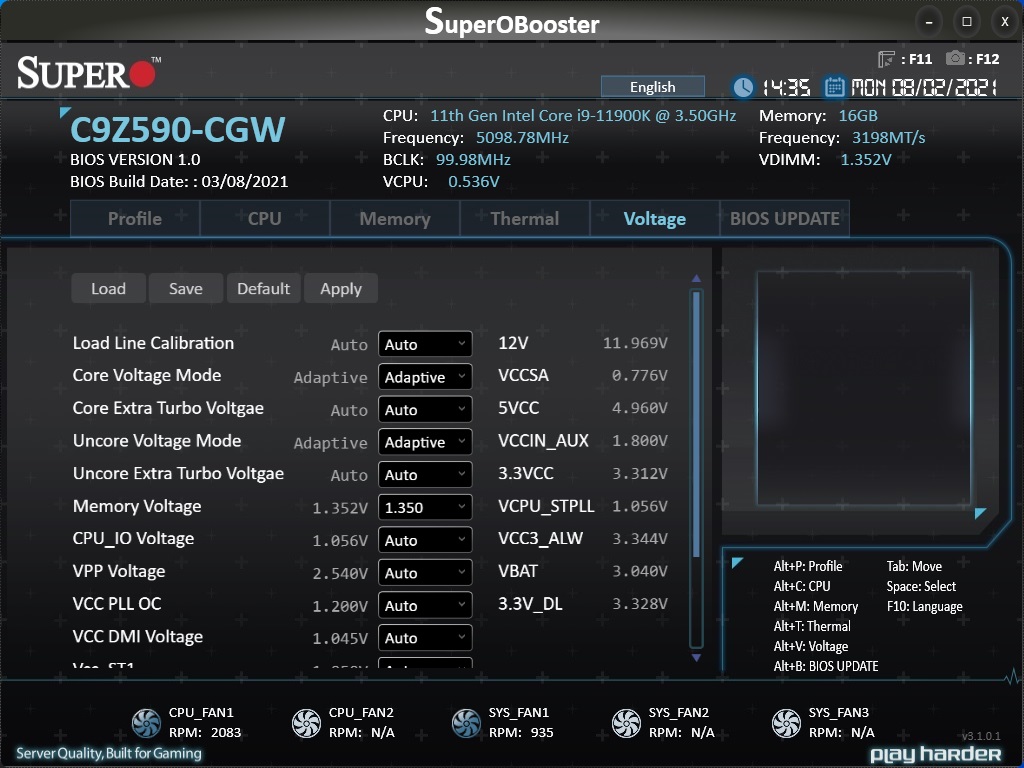
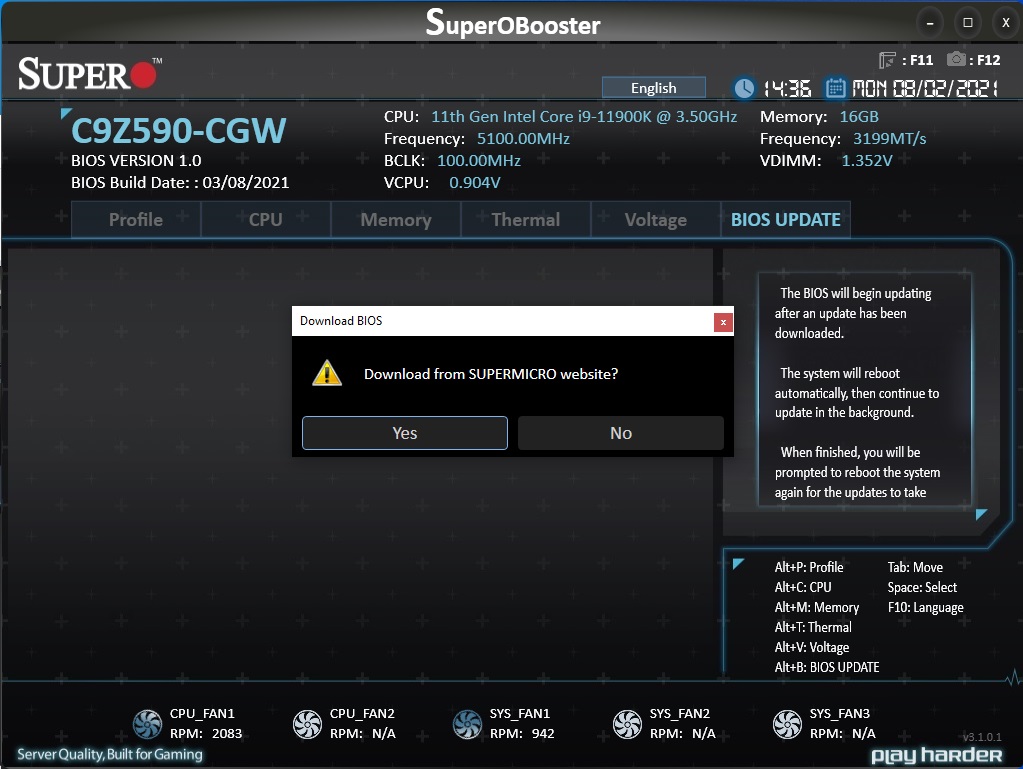
Test System
As of March 2021, we’ve updated our test system to Windows 10 64-bit OS (20H2) with all threat mitigations applied. On the hardware front, we’ve switched to all PCIe 4.0 components. We upgraded our video card to an Asus RTX 3070 TUF Gaming and the storage device to a 2TB Phison PS5-18-E18 M.2. We’ve also updated the games to F1 2020 and Far Cry: New Dawn, along with the hardware changes. We use the latest non-beta motherboard BIOS available to the public unless otherwise noted (typically during new platform launches). The hardware used is as follows:
| CPU | Intel i9-11900K |
| Memory | GSkill Trident Z Neo 2x8GB DDR4 3600 (F4-3600C16Q-32GTZN) |
| Row 2 - Cell 0 | GSkill Trident Z Royale 2x8GB DDR4 4000 (F4-4000C18Q-32GTRS) |
| GPU | Asus TUF Gaming RTX 3070 |
| Cooling | Corsair H150i |
| PSU | Corsair AX1200i |
| Software | Windows 10 64-bit 20H2 |
| Graphics Driver | NVIDIA Driver 461.40 |
| Sound | Integrated HD audio |
| Network | Integrated Networking (GbE or 2.5 GbE) |
| Synthetic Benchmarks and Settings | Row 0 - Cell 1 |
| PCMark 10 | Version 2.1.2508 64 |
| Row 2 - Cell 0 | Essentials, Productivity, Digital Content Creation, MS Office |
| 3DMark | Version 2.17.7137 64 |
| Row 4 - Cell 0 | Firestrike Extreme and Time Spy Default Presets |
| Cinebench R20 | Version RBBENCHMARK271150 |
| Row 6 - Cell 0 | Open GL Benchmark - Single and Multi-threaded |
| Application Tests and Settings | Row 7 - Cell 1 |
| LAME MP3 | Version SSE2_2019 |
| Row 9 - Cell 0 | Mixed 271MB WAV to mp3: Command: -b 160 --nores (160Kb/s) |
| HandBrake CLI | Version: 1.2.2 |
| Row 11 - Cell 0 | Sintel Open Movie Project: 4.19GB 4K mkv to x264 (light AVX) and x265 (heavy AVX) |
| Corona 1.4 | Version 1.4 |
| Row 13 - Cell 0 | Custom benchmark |
| 7-Zip | Version 19.00 |
| Row 15 - Cell 0 | Integrated benchmark |
| Game Tests and Settings | Row 16 - Cell 1 |
| F1 2020 | Ultra Preset - 1920 x 1080, TAA, 16xAF (Australia, Clear, Dry) |
| Far Cry: New Dawn | Ultra Preset - 1920 x 1080 |
MORE: Best Motherboards
MORE: How To Choose A Motherboard
Get Tom's Hardware's best news and in-depth reviews, straight to your inbox.
MORE: All Motherboard Content
Current page: Firmware, Software and Test System
Prev Page Features and Specifications Next Page Benchmarks and Final Thoughts
Joe Shields is a staff writer at Tom’s Hardware. He reviews motherboards and PC components.